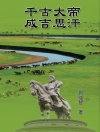In ‘Geronimo’s Story of His Life (Illustrated Edition), ‘ the legendary Apache leader recounts his journey from his youth to his role as a warrior and a symbol of resistance against the encroachment of American settlers. Written in collaboration with historian S. M. Barrett, this autobiography blends vivid storytelling with poignant reflections on culture, displacement, and survival. The narrative showcases Geronimo’s deep connection to the land and traditions of his people, all while employing a stark yet lyrical prose style that captivates the reader. The illustrated edition enriches the text with visual context, providing readers with authentic representations of Apache life and the historical events that shaped both Geronimo’s life and Native American history during a tumultuous period of American expansionism. Geronimo (1829-1909) was not just a warrior; he emerged as a complex figure representing the fierce resistance of the Apache people against their oppressors. Growing up during a time of violence and cultural disruption, his experiences with betrayal, loss, and survival fueled his drive to protect his people. This book serves as a powerful narrative shaped by his firsthand experiences and reflections on leadership and identity in the face of colonial pressures. ‘Geronimo’s Story of His Life’ is essential reading for anyone interested in American history, Native American struggles, or the fraught dynamics between Indigenous peoples and colonial powers. It offers an intimate perspective from one of America’s most iconic figures, providing insights that resonate far beyond his time. This illustrated edition is particularly recommended for those who appreciate the interplay of visual art and narrative, bringing Geronimo’s story to life and making historical context more accessible for today’s audience.
关于作者
Geronimo, whose name in his native Apache language meant ‘one who yawns’, was a prominent Native American leader of the Chiricahua Apache who symbolized Native American resistance and tenacity in the late 19th century. Born in June 1829, Geronimo played a pivotal role as a shaman and leader in the Apache’s protracted defence against Mexico and the United States’ encroachments on their traditional lands. Despite his eventual surrender in 1886 to U.S. authorities, Geronimo’s indomitable spirit and fight for freedom have left a lasting legacy and have cast him as emblematic of Native American struggle against U.S. expansion. ‘Geronimo’s Story of His Life (Illustrated Edition)’ offers a profound window into his life, his passions, and his perspective on the array of events that shaped his experiences. Collaboratively penned with S. M. Barrett and dictated by Geronimo himself, it chronicles the hardships faced by his people and his unyielding desire for autonomy and respect. As a literary piece, it combines an autobiographical memoir’s historical value with the oral storytelling tradition’s depth and richness, allowing readers a rare insider’s glimpse into Geronimo’s culture, beliefs, and encounters during a time of monumental change. His words challenge and enrich the understanding of the complex and often turbulent relations between Native Americans and the United States, serving as an essential read for those seeking authenticity and insight into the indigenous experience of the time. (Kroeber, 1907)












